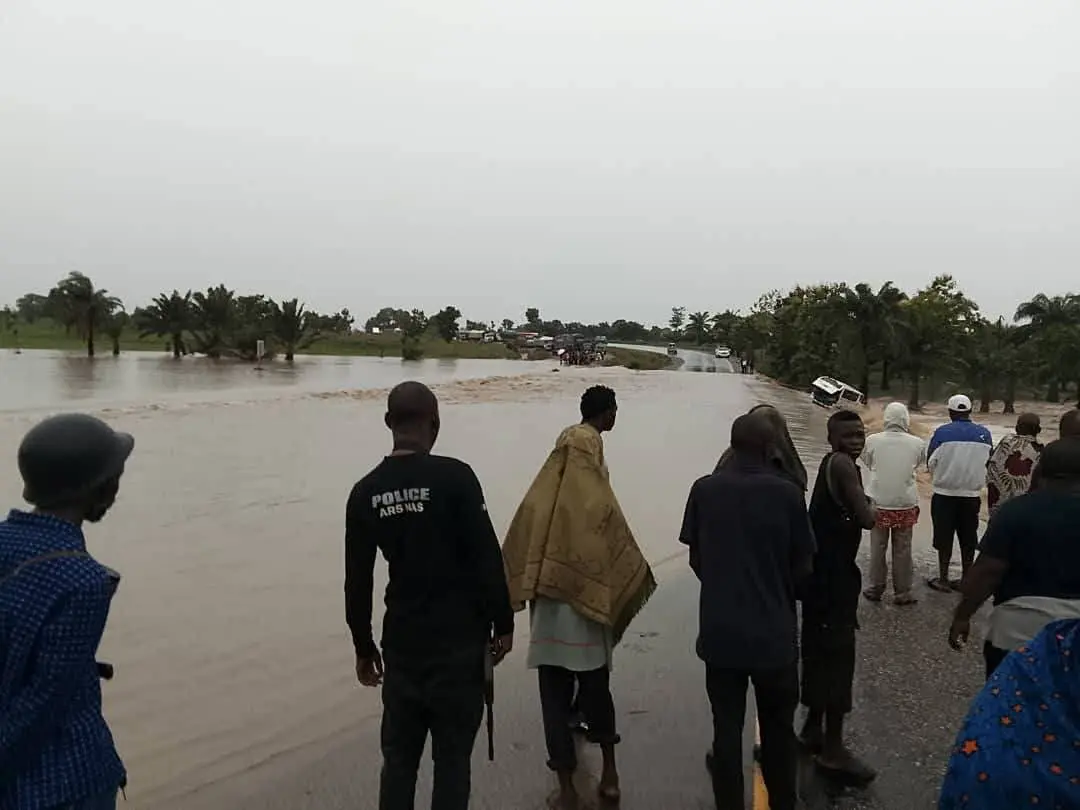Now Reading: Flood Halts Makurdi–Abuja Highway Just Hours Before Tinubu’s Benue Visit
-
01
Flood Halts Makurdi–Abuja Highway Just Hours Before Tinubu’s Benue Visit
Flood Halts Makurdi–Abuja Highway Just Hours Before Tinubu’s Benue Visit

Heavy rains brought the Makurdi–Lafia–Abuja road to a standstill on June 18, 2025—mere hours before President Bola Tinubu was due in Benue State. Torrents swept across the major artery, stranding motorists and disrupting preparations for Tinubu’s humanitarian mission following the devastating Yelewata massacre.
Several commuters reported abandoning vehicles and seeking refuge in nearby homes and petrol stations. One stranded driver described the situation: “Water rose ankle-deep in minutes, and soon we couldn’t see the road,” adding to chaotic scenes at makeshift shelters.
Tinubu’s itinerary had included condolences and security meetings to address the horrific Yelewata killings on June 13, where at least 150 lives were lost. The flood’s sudden strike sparked concerns over whether the President’s motorcade and emergency responders would be able to navigate the logistics safely.
This flooding incident isn’t new—Makurdi’s drainage infrastructure has long struggled under heavy rains. A 2024 survey showed nearly 14 local councils were affected by seasonal deluge last year. Critics argue chronic neglect of underpasses and culverts intensifies every rain season.


Lafia commuters shared fears this could become routine. “Last year, roads collapsed in parts of Wadata and Gyado after a nine-hour downpour,” recalled one resident—echoing previous warnings about structural failures.
State authorities say repair teams and emergency services have been dispatched. Benue’s Emergency Management Agency warned drivers via radio: avoid the corridor if possible and use alternate routes. President Tinubu’s convoy adjusted its route as a precaution.
With millions watching, the flood has spotlighted a broader issue: the urgent need for resilient infrastructure in regions prone to both violence and weather disasters. Tens of thousands displaced by the Yelewata attacks now face an even steeper climb toward recovery.





















